Geography Test Yourself
Here's a really quick way of testing if you've learned the meanings of the key words in this section.
Look at the key word on the card and see if you can remember its definition.
If you get stuck, you can be shown the mnemonic to reveal an image that should help you remember.
To check if you're right, or remind you if you've forgotten, press the card to flip it.
Go through the whole list to see how many definitions you can recall.
Revisit any that you had difficulty remembering until you're confident you can
recall all of them.
Longshore drift
The zigzag movement of sand and pebbles along a shore caused by waves going up the beach at an oblique angle (swash) and returning at right angles (backwash). This results in the gradual movement of beach materials along the coast
Longshore drift – The zigzag movement of sand and pebbles along a shore caused by waves going up the beach at an oblique angle (swash) and returning at right angles (backwash). This results in the gradual movement of beach materials along the coast
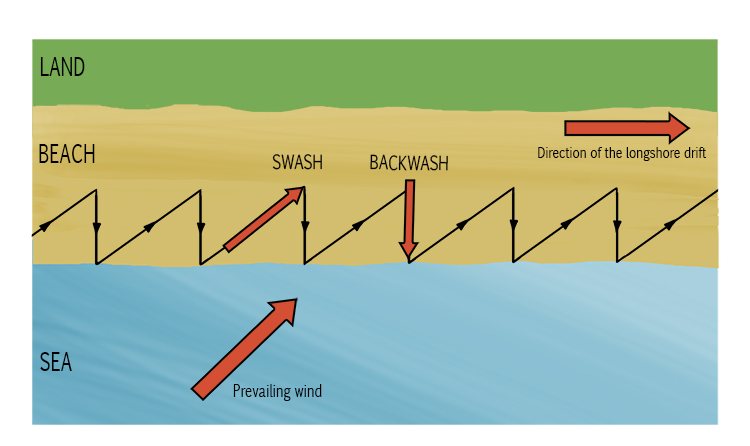
Along the shore, sand and pebbles drift (Longshore drift) in at one angle and out at another.
The best way to remember longshore drift is to study the diagram above. The prevailing wind (the direction it usually blows from) causes waves to approach the coast at an angle. The swash carries the sand and pebbles up the beach at the same angle.
The backwash, however, carries the material back down the beach at right angles as this is the steepest gradient.
If you dropped a pebble in the water at one end of the beach, it could zigzag all the way along to the other end.
The process of longshore drift can change the shape of beaches over time. Groynes can be constructed to stop the flow of longshore drift, but some sand and gravel still escapes. Where the line of the coast changes, longshore drift can form spits, for example at the mouth of a river.
Coastal Erosion
The wearing away and removal of material by turning material into a solution or by attrition, abrasion or hydraulic action
Erosion – The wearing away and removal of material by turning material into a solution or by attrition, abrasion or hydraulic action
-in-coastal-landscapes-geography.95797ca.jpg)
Types of erosion:
Solution: The sides and bottom of coastal cliffs dissolve into the seawater.
Attrition: Wearing of the cliff and bedrock by rocks carried by the sea bouncing and bumping and breaking off small particles.
Abrasion: Wearing down the cliff face and bedrock by pebbles grinding, rubbing, scratching and scuffing like sandpaper.
Hydraulic action: Waves compress pockets of air against the cliff face and into cracks which expand and fracture the cliff over time.
To remember that erosion is attrition, abrasion, hydraulic action and turning material into a solution, recall the following story:

Eros, he rose up upon (erosion) a hydrant and started acting on it (hydraulic action). First, he tried being a donkey and made a braying (abrasion) sound that gave everyone a headache, so the solution (solution) was two headache pills. They did stay, however, to see Eros do a trick on (attrition) the hydrant.
These four types of erosion change the appearance of the coastal landscape over time. Cliffs recede, beaches are formed or washed away and even the rock under the sea is gouged away.
New features, such as spits, appear as eroded material carried by the sea is deposited in a process called deposition.
Coastal Suspension
Fine, solid material held in the seawater while the seawater is moving
Suspension – Fine, solid material held in the seawater while the seawater is moving
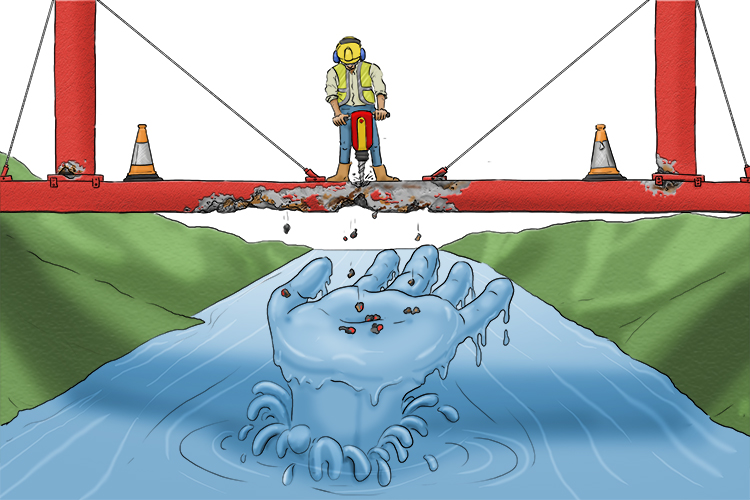
The rust on the suspension (suspension) bridge was all removed by the maintenance team and the small particles were held in the water.
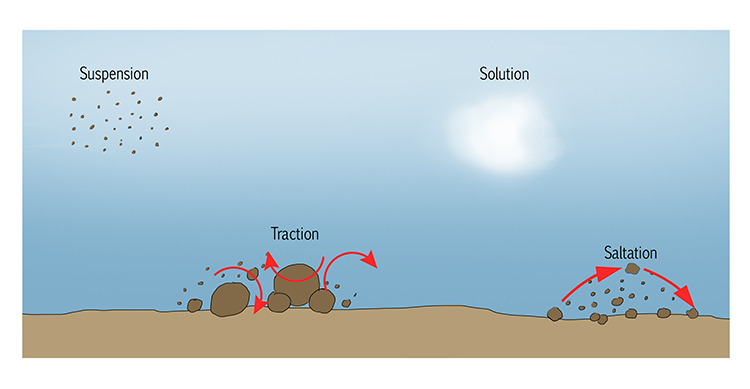
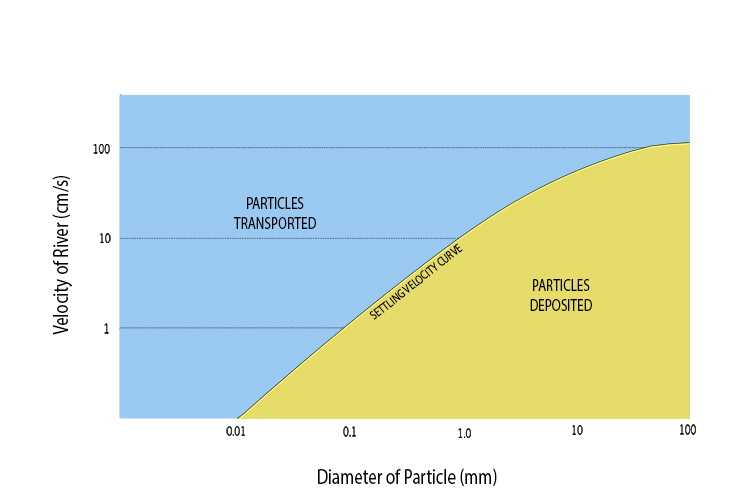
Only material that can be reduced to tiny particles, such as silts and clays, can be suspended in the moving water. It can make the water look cloudy.
Currents can pick up lots of sediment – matter that settles at the bottom of the sea or river – during a storm, when strong winds generate high-energy waves. When waves and current lose energy, the suspended particles are deposited and, over time, this can form new land features.
Coastal Saltation
Particles bouncing along the sea bed (bouncing is the important word)
Saltation – Particles bouncing along the sea bed (bouncing is the important word)
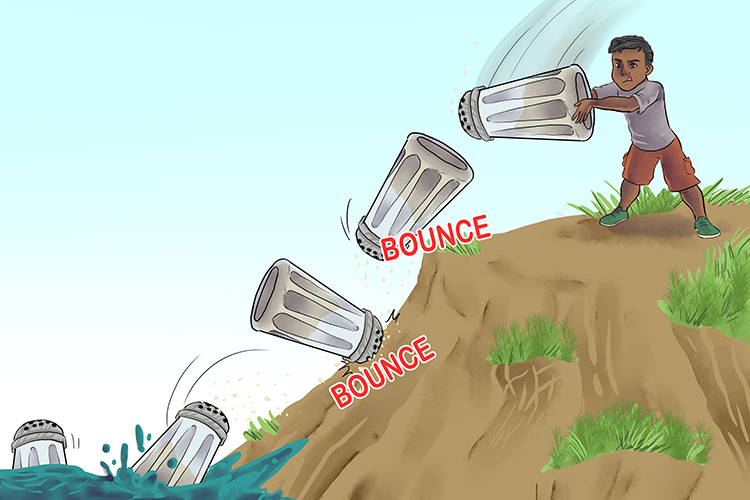
Too much salt was killing the nation (saltation), so the government ordered all salt pots to be bounced into the sea.

Saltation occurs when water flow – waves or current – is sufficient to repeatedly lift particles from the seabed, bouncing them along.
Over time, saltation can result in large deposits of sand and shingle – it is one of the ways in which beaches are formed.
Coastal Solution
Soluble particles are dissolved into the seawater. A liquid mixture in which the minor component is uniformly distributed within the major component
Solution – Soluble particles are dissolved into the seawater. A liquid mixture in which the minor component is uniformly distributed within the major component
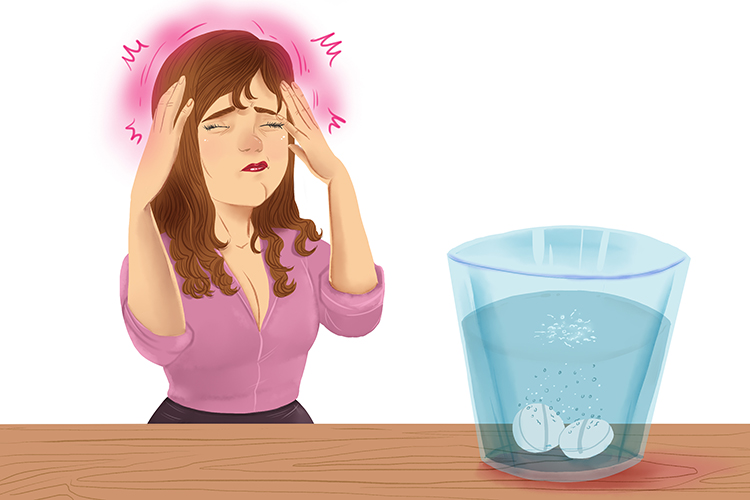
The solution to her headache was to dissolve two headache pills in a glass of water and drink it quickly.
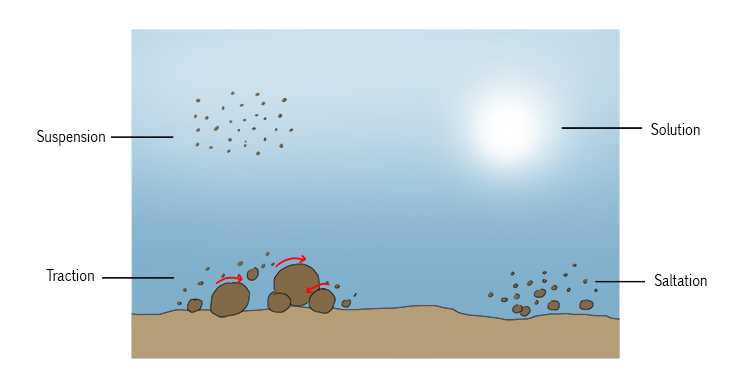
Certain types of rock – such as chalk and limestone – are dissolved by the acid in seawater to form a solution.
This is a form of chemical weathering.
A solution is not the same as a suspension. Solutions are transparent because the particles involved are extremely small, while a suspension often looks opaque or muddy.
Coastal Traction
The rolling of boulders and pebbles along the sea bed by the force of the waves
Traction – The rolling of boulders and pebbles along the sea bed by the force of the waves
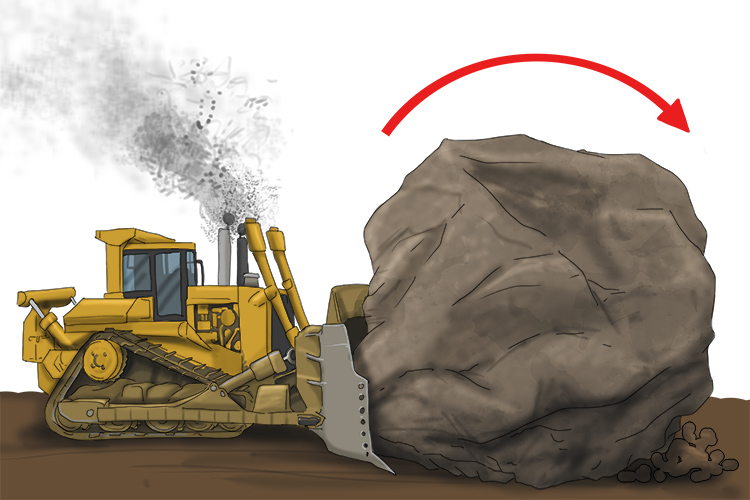
The tractor (traction) could just about roll the big boulder.
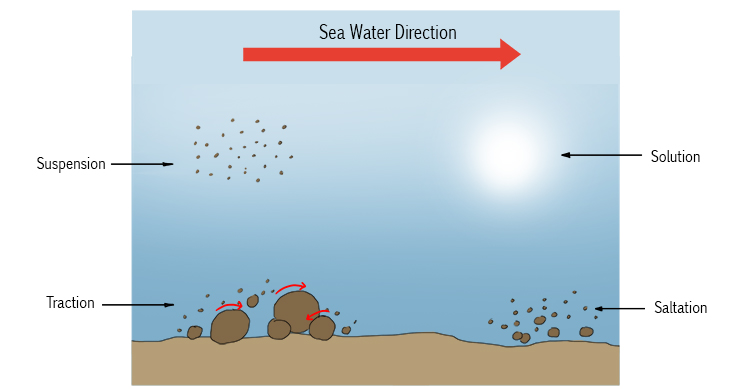
Traction differs from saltation in that the material moved by the flow of the sea does not lose contact with the seabed. Traction is the rolling of larger particles along the seabed.
Over time, these larger pieces of material are worn down. This process results in smaller particles which then become subject to saltation.
Hydraulic Power
The movement of objects using liquids. With the sea, this is the process by which breaking waves compress pockets of air in cracks in a cliff. The pressure may cause the crack to widen, breaking off rock.
Hydraulic power – The movement of objects using liquids. With the sea, this is the process by which breaking waves compress pockets of air in cracks in a cliff. The pressure may cause the crack to widen, breaking off rock.
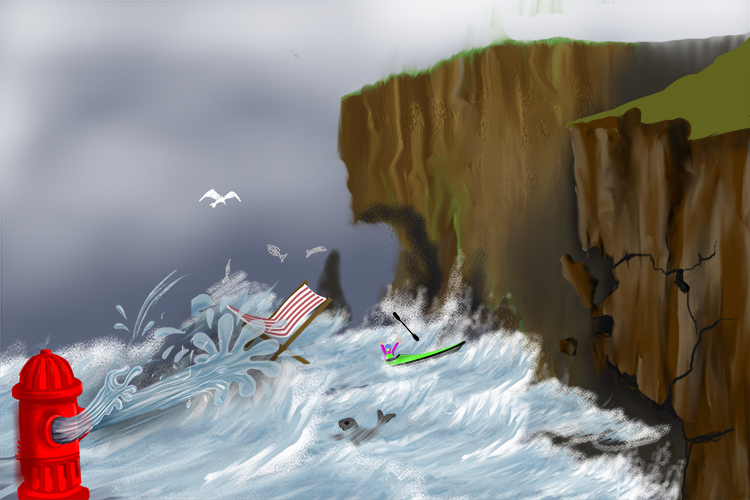
The water hydrant could flick and power (hydraulic power) away objects using water.
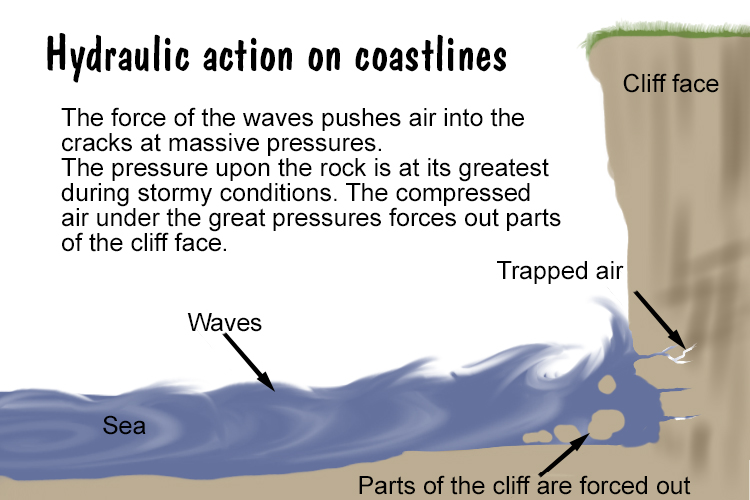
With hydraulic action, cracks in the rock are gradually widened so the waves then compress more air, increasing the explosive force of its release. The effect intensifies in what is known as a "positive feedback" system.
Over time, as the cracks get bigger, they sometimes form caves. The pieces that fall off produce additional types of erosion: abrasion and attrition.
Coastal Abrasion (or Corrosion)
The wearing away of cliffs by sediment flung by breaking waves
Coastal Abrasion (or Corrosion) – The wearing away of cliffs by sediment flung by breaking waves
In order to understand coastal abrasion, you need to understand the word abrasion.
Abrasion – Wear down and grind down.
(pronounced uh-bray-zhun)
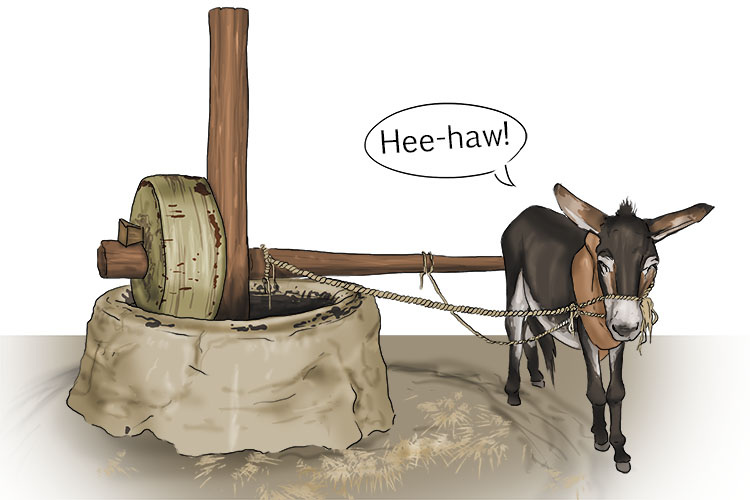
You could hear the brays from (abrasion) the donkey as she wore down and ground down the corn.
So coastal abrasion is the wearing down and grinding down of a coast.
-in-coastal-landscapes-geography.95797ca.jpg)
Abrasion occurs as breaking waves which contain sand and large fragments smash along the cliff and wear it away. It is commonly known as the sandpaper effect.
Abrasion is when two surfaces rub against each other and attrition is where they bounce or smash against each other. Abrasion is rubbing, scratching and scuffing.
-in-coastal-landscapes-geography-2.6aa47e3.jpg)
Breaking waves throw sand, pebbles and sometimes boulders against the cliff face. These scrape away at the rock rather like sandpaper, eventually causing undercutting at the base of the cliff.
Coastal Attrition
Erosion caused when rocks and boulders transported by waves bump in to each other and break in to smaller pieces
Attrition – Erosion caused when rocks and boulders transported by waves bump in to each other and break in to smaller pieces
Attrition – think BUMP
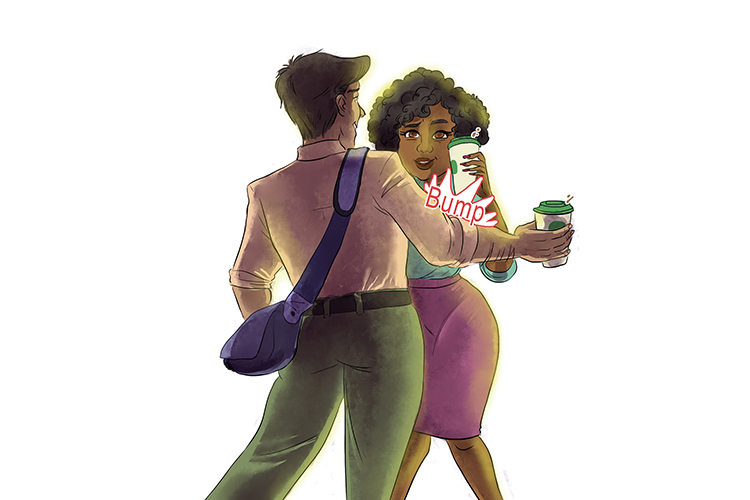
A trick with attraction (attrition) is to make sure you bump into the person you are attracted to.
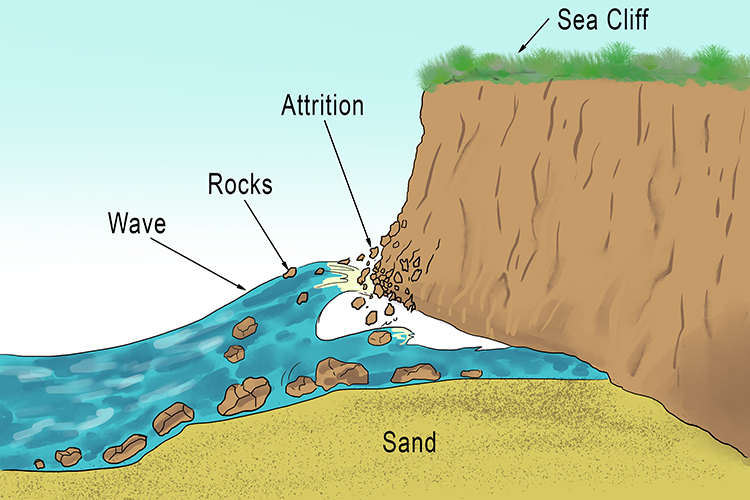
Attrition occurs when rocks and pebbles carried by waves smash into each other, and against the seabed and the base of a cliff or rocky outcrop.
Through this action, the rocks and pebbles are worn away, becoming smaller, rounder and smoother.
Arch
A wave-eroded passage through a small headland. This begins as a cave formed in the headland, which is gradually widened and deepened until it is cut right through
Arch – A wave-eroded passage through a small headland. This begins as a cave formed in the headland, which is gradually widened and deepened until it is cut right through
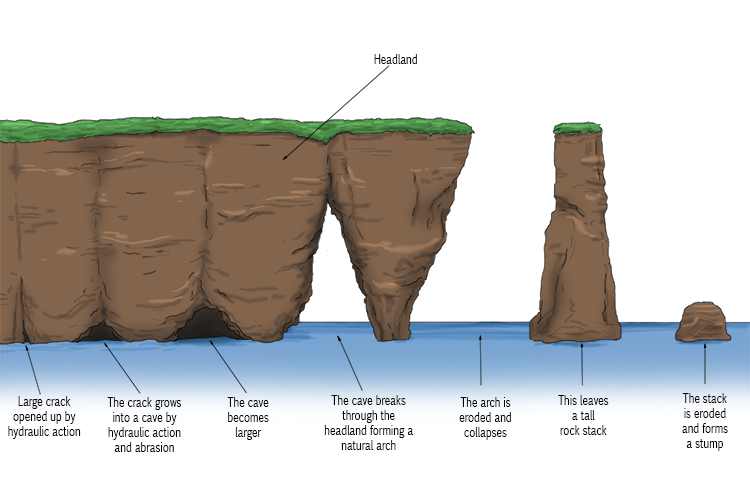
The best way to learn about arches is to see how one develops, as above.
The beginning of an arch is a crack in a rock that is further opened by hydraulic action caused by powerful waves. Other forms of erosion, notably abrasion, then make the opening bigger. Eventually, it becomes a cave, then the cave breaks through to the other side of the rock to become an arch.
As the rock supporting the arch is further eroded and weakened, the roof of the arch collapses, leaving behind a stack. Yet more erosion reduces the stack to a stump.
Bar
Where a spit grows across a bay, a bay bar can eventually enclose the bay to create a lagoon
Bar – Where a spit grows across a bay, a bay bar can eventually enclose the bay to create a lagoon
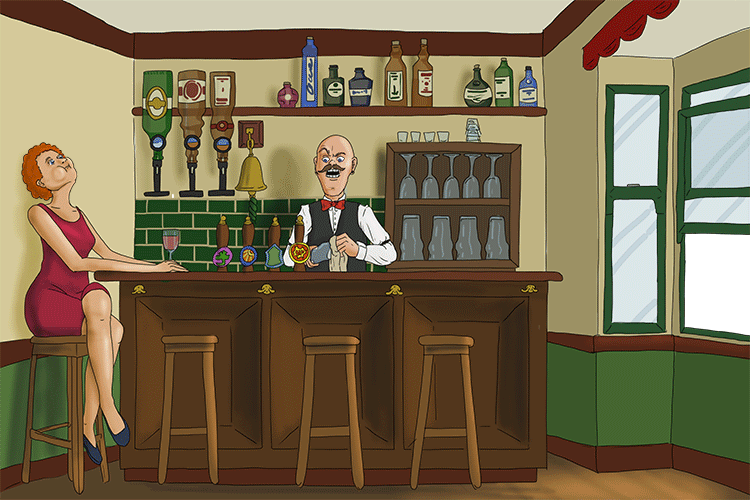
She sat at the end of the bar and spat. The spit went right across into the bay window.

A bar results from the further development of a spit.
Longshore drift moves sediment along the coast, but when the coast suddenly changes shape, going into a bay, the sediment is deposited at the "corner".
Over time, this deposition grows into a spit, and over even more time, it grows right across the mouth of the bay, becoming a bar.
The water in the bay then becomes a lagoon, cut off from the sea.
Beach
The zone of deposited material that extends from the low tide line to the limit of the storm waves
Beach – The zone of deposited material that extends from the low tide line to the limit of the storm waves
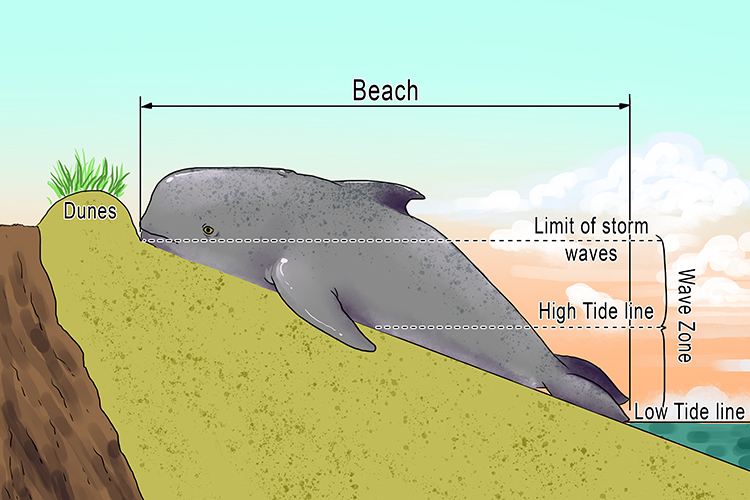
The beached (beach) whale was lying between the limit of the storm waves and the low tide line.
Foreshore – High tide line to low tide line.
Backshore – High tide line to the extreme land limit of the beach.
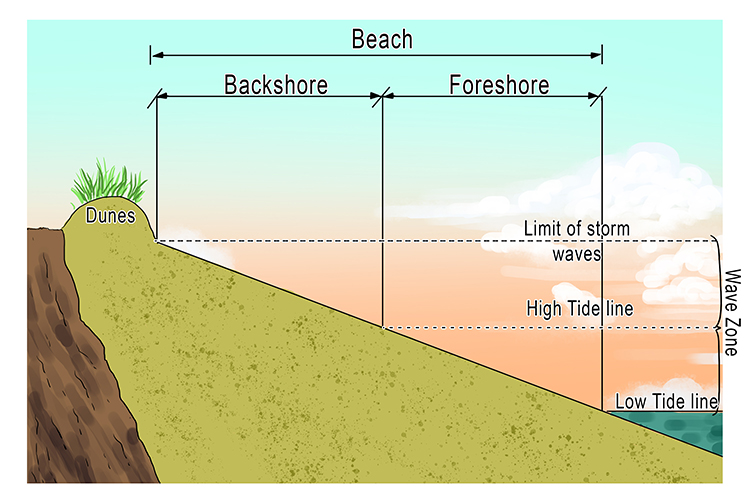
A beach is a narrow strip of land between a body of water and an inland area. It slopes gently downwards from land to water and is covered in materials such as sand, pebbles and seashell fragments.
Beaches are formed from sediment in the water. The sediment is carried by incoming waves until they lose energy where they meet the shore. The sediment is then deposited, eventually resulting in a beach.
Beach Nourishment
The addition of new material to a beach artificially, such as the dumping of large amounts of sand or shingle
Beach Nourishment – The addition of new material to a beach artificially, such as the dumping of large amounts of sand or shingle

The beach was hungry for nourishment so the boat crew found a way to give it large amounts of sand.
Beach nourishment = Food for the beach

A dredging vessel can pump sand on to the beach. Vessels can scoop up to 100 metres below the seafloor and throw sand onto the beach from 80 metres away.
The reasons for beach nourishment include:
- A wider beach can protect against storm damage
- Tourism (visitors want sandy beaches)
- Enlarging a beach can help to protect eco-systems on the shore
However, there can be downsides. For instance, some marine life can be buried under the new material.
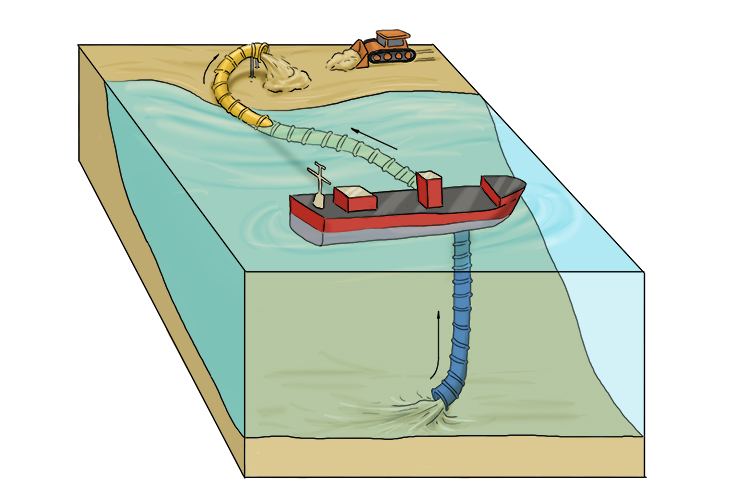
Sand can be sucked up and pumped onto the beach from the seabed.
Beach nourishment is not a long-term solution to the loss of sand from beaches. Waves, storms, and rising sea levels will continue to move sand along the coast and back into the wider ocean.
Beach nourishment can protect coastal structures for as long as the sand lasts, but over time the beach may have to be renourished, and the cost can be high.
Beach Reprofiling
Changing the profile or shape of the beach
Beach Reprofiling – Changing the profile or shape of the beach
In order to understand "beach reprofiling" you need to remember what the word profile is:
Profile: An outline
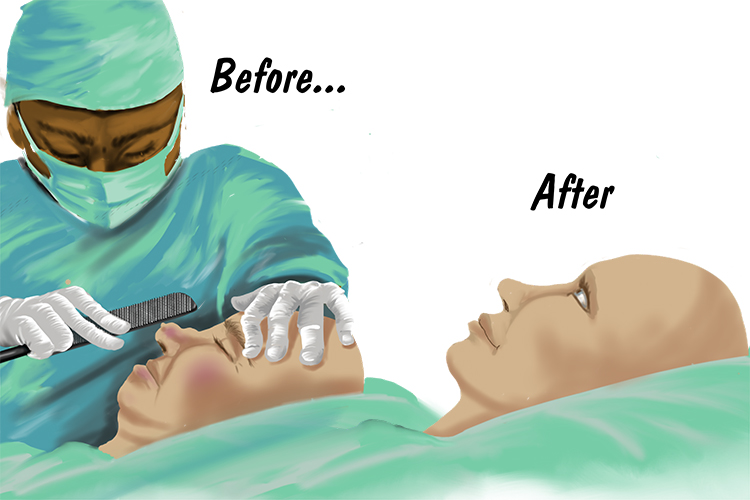
The professional used a file (profile) and that changed his outline completely.
Beach profile refers to a cross-sectional trace of a beach at an angle of 90° to the sea.

Beach reprofiling is therefore changing the outline of the beach.
Note: It usually refers to the direct transfer of material from the lower to the upper beach or occasionally the transfer of sand down the dune face from crest to toe.
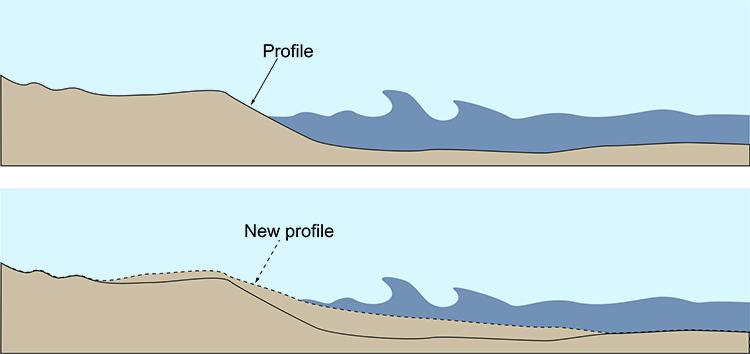
Re-shaping the cross-sectional profile of a beach in this way ensures it offers the maximum protective gradient and width against destructive wave action.
Bulldozers are used to create a gentle profile, which is much more effective at absorbing wave energy and preventing further erosion.
Sea Caves
Large holes in the cliff caused by waves forcing their way into cracks in the rock
Sea Caves – Large holes in the cliff caused by waves forcing their way into cracks in the rock
We all know what a cave is, but how are they formed on the coastline?

Waves crashing against the base of a cliff can sometimes form a cave. A large crack can open up by hydraulic action. Sea caves form along a crack in a rock or where the rock is softer.
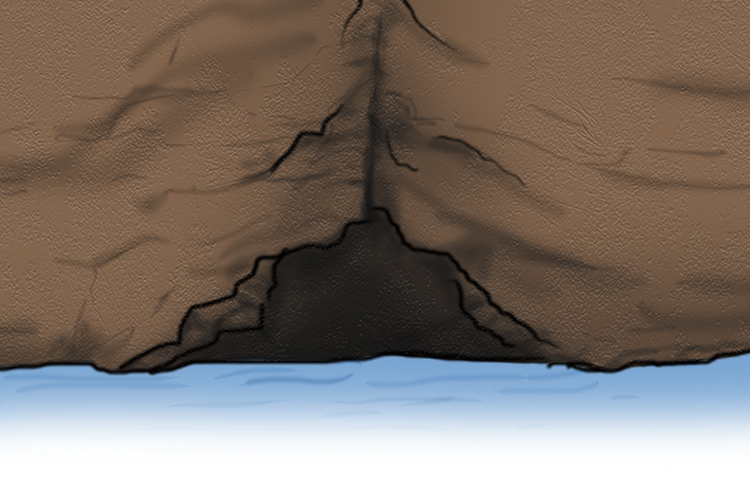
The crack grows into a cave by hydraulic action and abrasion.
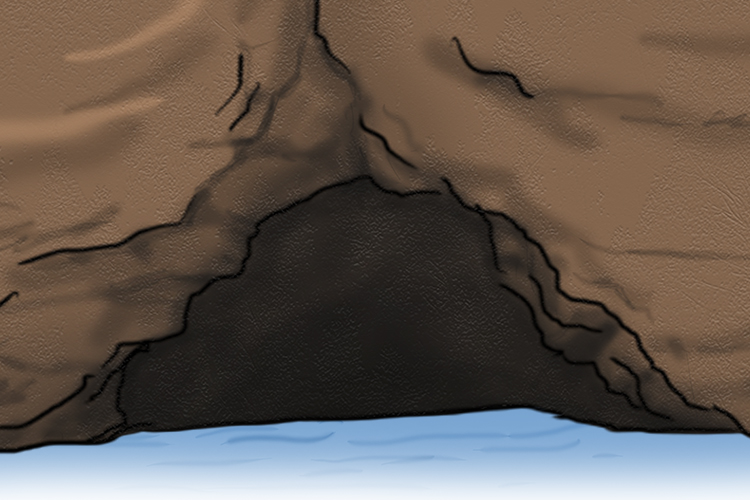
The cave becomes larger. Caves are typically found in sedimentary rock, which is relatively soft. They are less common in harder granite rocks.
Chemical Weathering
The decomposition (or rotting) of rock caused by chemical change within that rock
Chemical Weathering – The decomposition (or rotting) of rock caused by chemical change within that rock
Note: Sea water can cause chemical weathering of cliffs.
The key to learning what chemical weathering means is to first define and understand what weathering is.
Weathering is the process that breaks down rock.
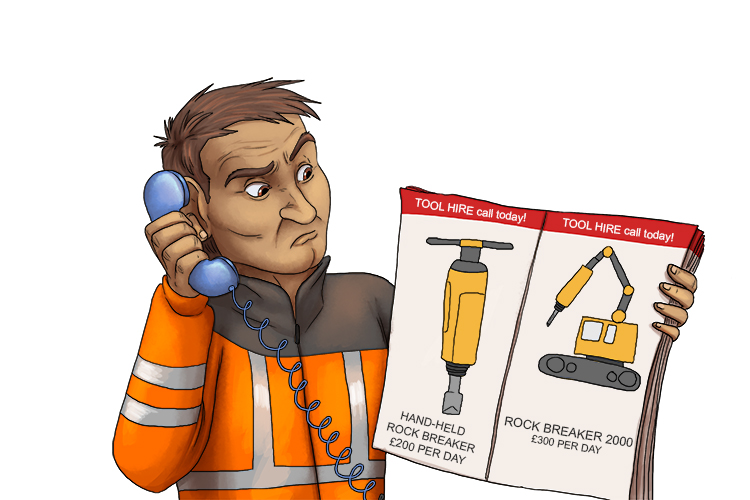
I can't decide whether to ring (weathering) for the hand-held rock breaker or the rock breaker vehicle.
The term chemical weathering is now easier to understand. It is the chemical reaction with the rocks that breaks down the rocks.
Chemical weathering is when chemicals in rain and moving water (such as rivers or the sea) react with rocks and minerals to change or weaken them. Chemical weathering can cause some type of chemical reaction within the rock or mineral itself to form new minerals, clays and soluble salts.
If a coastline is made up of rocks such as limestone or chalk, over time they become dissolved especially by acid in water.
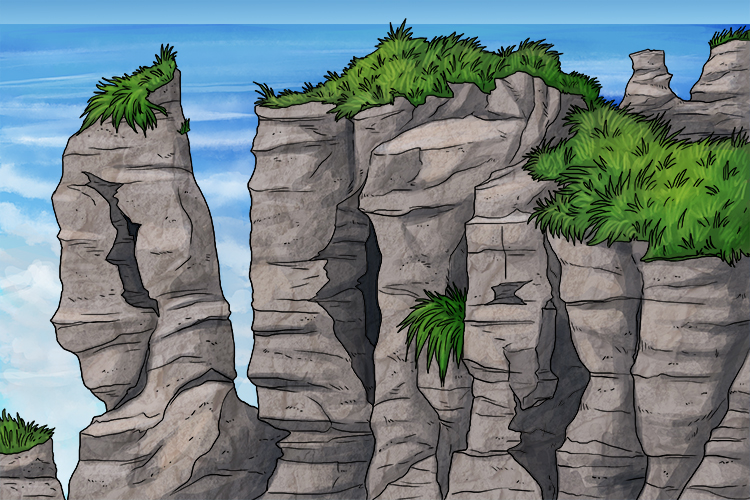
Apart from chemical weathering there are two other forms of weathering = physical and biological:
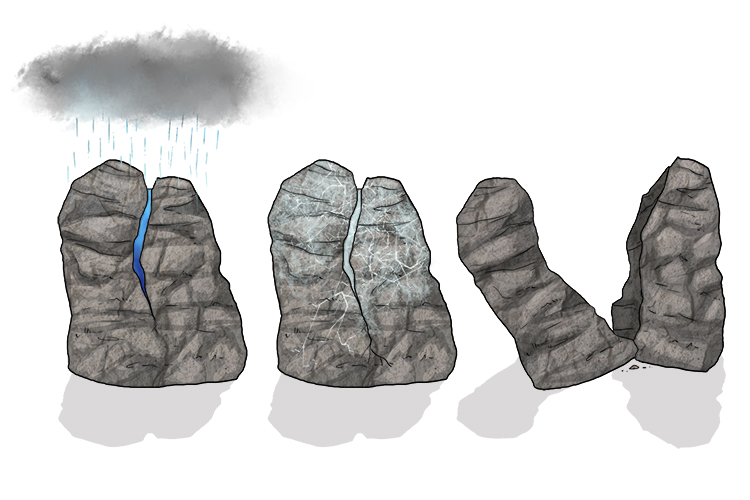
Physical weathering is caused by the effects of changing temperature on rocks, causing the rock to break apart as in freeze-thaw action.
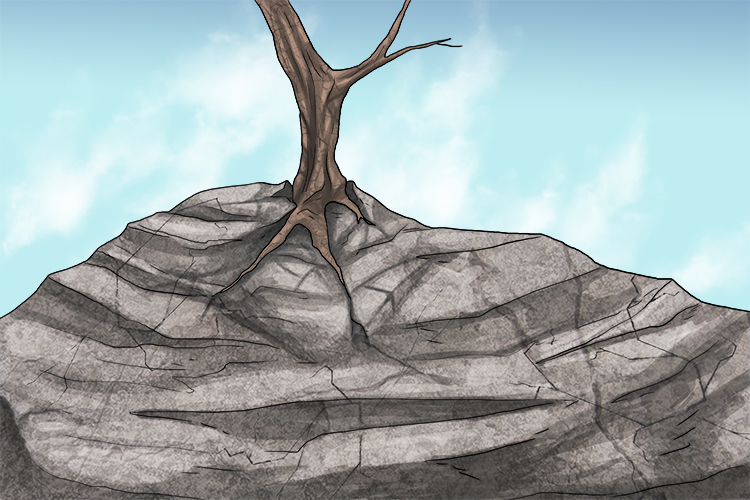
Biological weathering is caused by plants and animals.
Cliff
A steep, high rock face formed by weathering and erosion along the coastline
Cliff – A steep, high rock face formed by weathering and erosion along the coastline
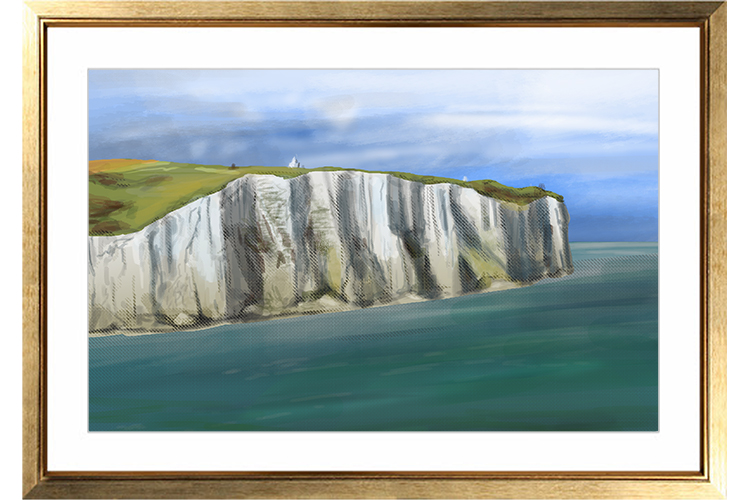
Famous cliffs include the White Cliffs of Dover.
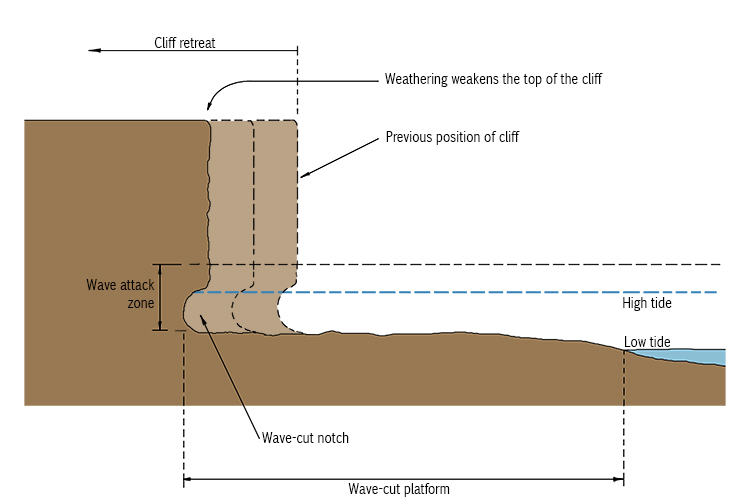
Weathering weakens the top of the cliff.
Erosion weakens the base of the cliff.
The base of the cliff is eroded by hydraulic action and abrasion. Points of weakness such as faults and joints are attacked most. This forms a "wave-cut notch".
Longshore drift and backwash carry the material from the base of the cliff forming a wave-cut platform.
The weight of the unsupported cliff eventually causes it to collapse.
As the cliff is eroded backwards, it leaves behind a wave-cut platform.
This platform is rarely eroded, as the wave's energy is concentrated on eroding the area between the high and low water mark, and not the rock underneath it.
Deposition
Occurs when material being transported by the sea or a river is dropped as waves or current slow down due to loss of energy
Deposition – Occurs when material being transported by the sea or a river is dropped as waves or current slow down due to loss of energy

The position (deposition) is that when he loses energy, she will be dropped.
Deposition occurs when the sediment, or particles, are not moving fast enough in the water.
You absolutely will not need the graph below but it shows you that some clever person has measured that:
A. A piece of sediment of 0.1mm in diameter will drop to the river/ocean floor when moving at just less than 1cm/s.
B. A piece of sediment of 1mm in diameter will drop to the river/ocean floor when moving at just less than 10cm/s.
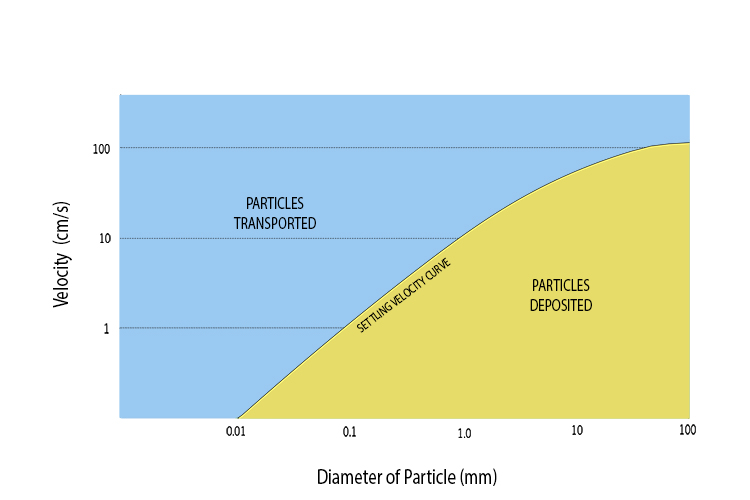
As waves and currents slow and lose energy, the material they carry sinks and is deposited (hence the word "deposition").
These deposits build up gradually over long periods of time and result in features such as spits, bars and beaches.
Foreshore
The part of a seashore between high-water and low-water mark
Foreshore – The part of a seashore between high-water and low-water marks
Here are four shore (foreshore) line positions but the important lines are the high tide and low tide positions.
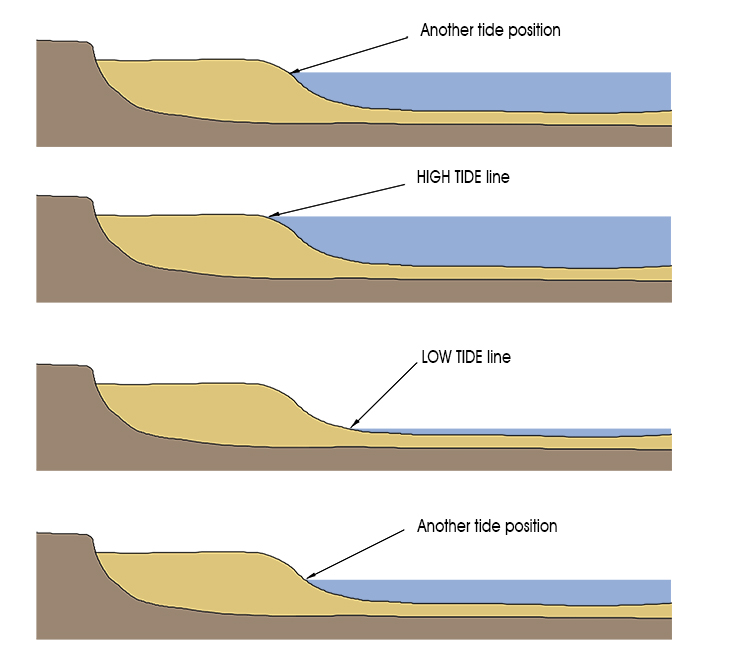
The areas of a shoreline (including the foreshore) are shown here:

Another way to remember what the foreshore is, is to think of it as the part of the shore that gets wet as the tide comes in to its highest extent.
Gabion
Steel wire mesh filled with boulders used in coastal defence. The steelwork is intermeshed and looks like fishnets
Gabion – Steel wire mesh filled with boulders used in coastal defence. The steelwork is intermeshed and looks like fishnets
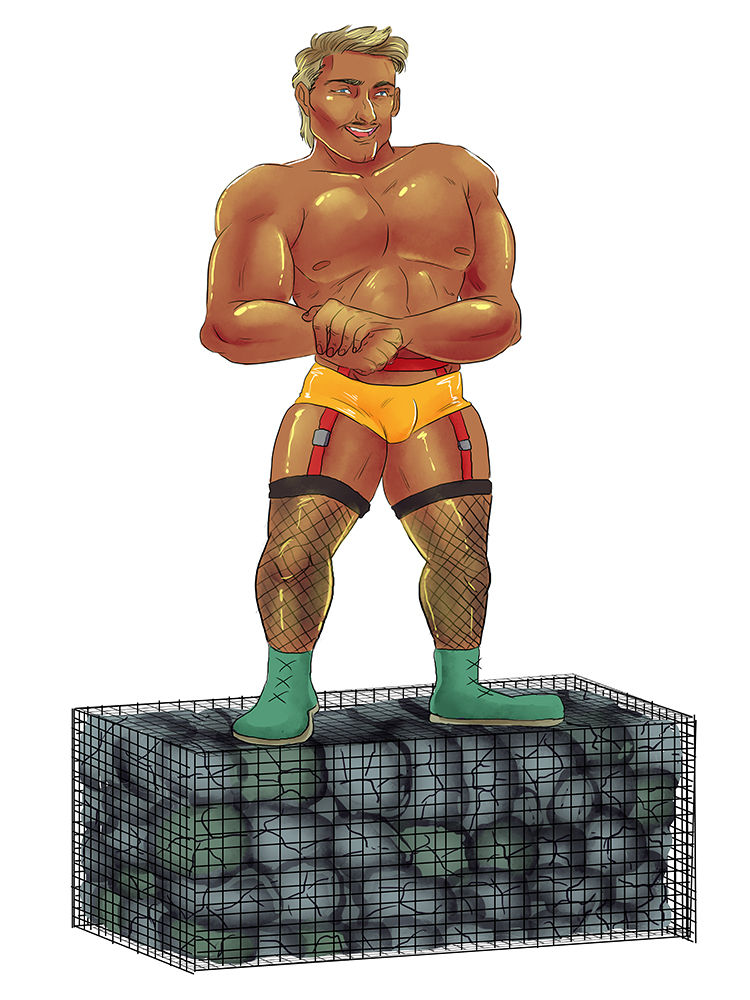
I feel so gay and happy being on (gabion) this wire basket filled with rocks and matching in my fishnet tights.
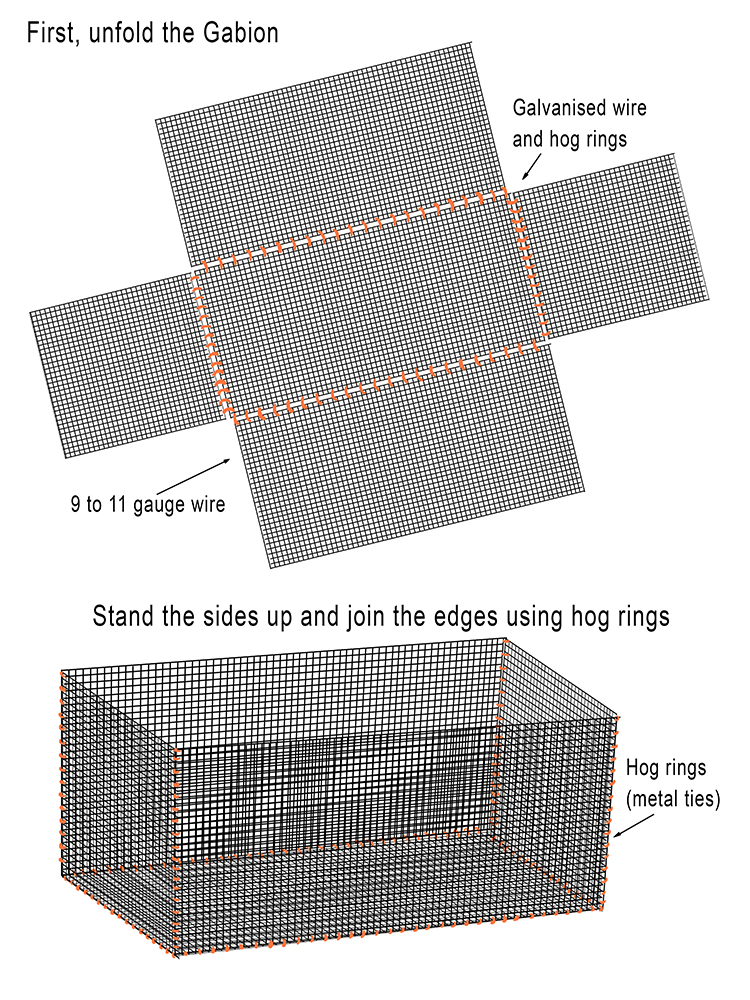
Place the gabion in its final resting position, fill the gabion up with stones and fix the top on, again with hog rings.
Typical gabion wall cross section.
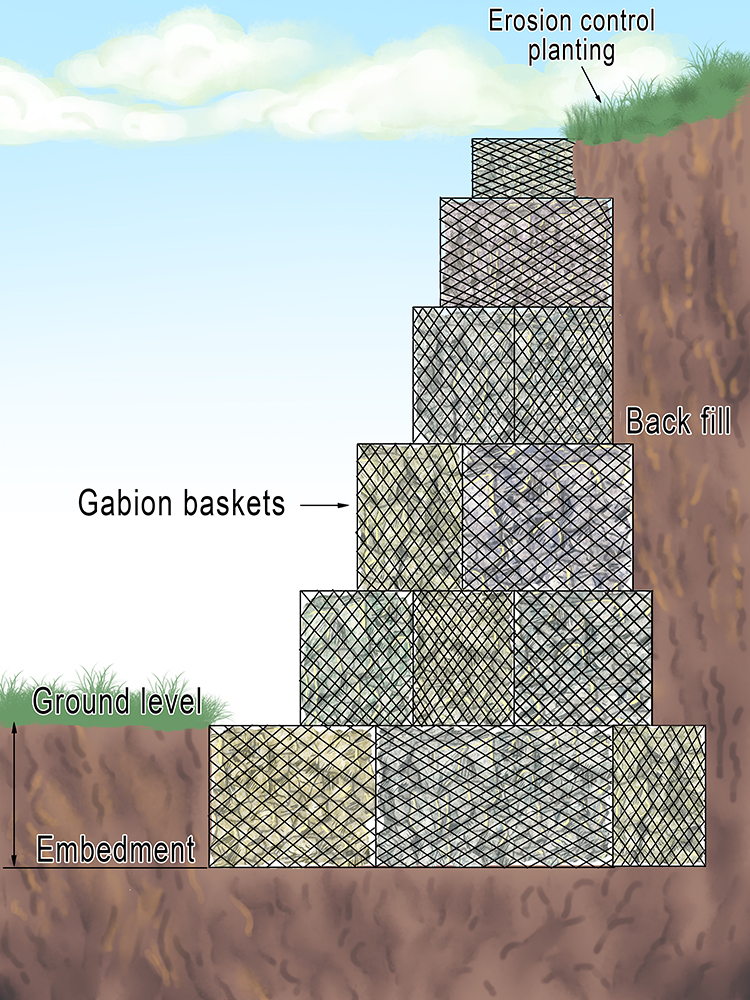
Typical vegetated gabion wall cross section.
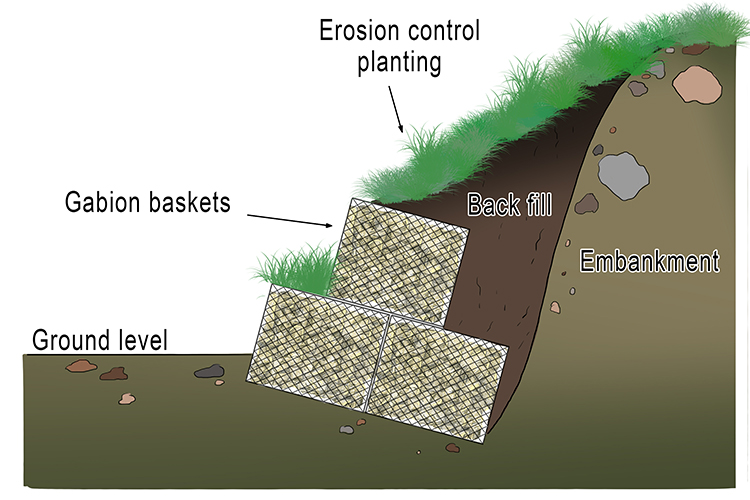


-in-coastal-landscapes-geography.95797ca.jpg)












-in-coastal-landscapes-geography-2.6aa47e3.jpg)






























